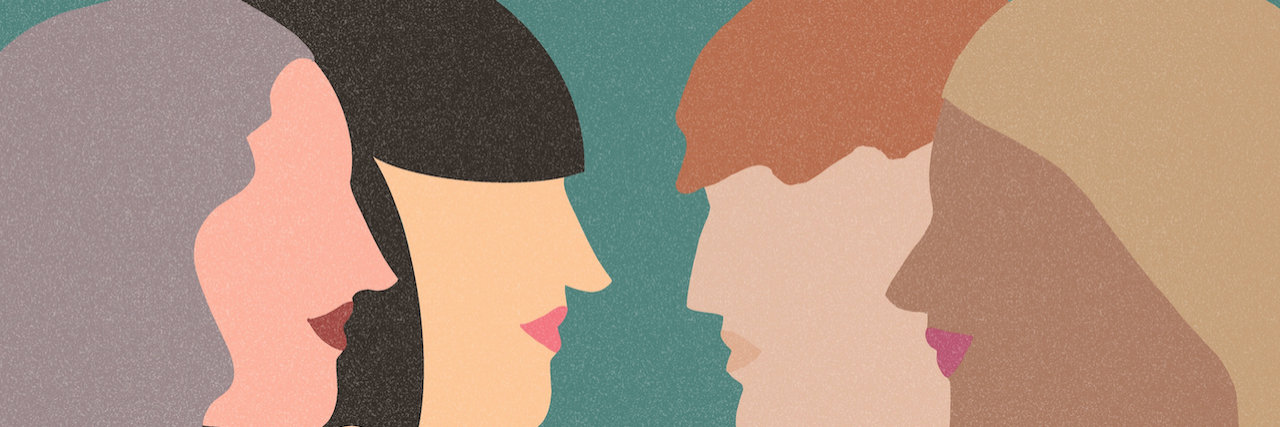Today, I scheduled my partial hysterectomy. I sat across from the doctor I have grown to trust and admire for nearly 20 years. At 34, I cannot believe this is where my path has led me but also, I am thrilled for the relief I’ll experience.
I have lived with endometriosis and chronic pelvic pain since my first period. I was diagnosed with endometriosis when I was 15 years old. After five surgeries in my teens and early 20s, I vowed that I would never have another operation. Now, 13 years since my last endometriosis excision surgery, I went back to my favorite doctor and we had a heartfelt conversation about what I want and need for my body moving forward. I told him in my ideal world, I’d have my uterus removed, but keep my ovaries if possible, and have all endometriosis excised. I want a clean start. I thought he would counter this proposal with another well thought out plan, but since he has known me since I was 15, he agreed that this surgical approach was the most appropriate for me now.
As I toggle between anxiety and excitement, I am reminded that I am not alone. There are many people who are choosing to have operations to improve their quality of life. I am amongst others who are advocating for what we want, because we know our bodies best. I think of people who have preventative organ removal after testing positive for the BRCA gene. I imagine people with no movement in a limb who finally decide that amputation is the ideal choice. I am not alone on this journey to life-altering surgery by choice.
I am comforted by these women who shared the stories behind their choices to have surgeries or utilize specific medical devices. These women noted that these decisions were made to help improve their quality of life. Loved ones may have suggested this path, but it was the their self-advocacy and research that led them to this choice.
Keisha Greaves (she/her)
Keisha Greaves lives with limb girdle muscular dystrophy. Following a fall, Keisha was no longer able to stand nor control her bowels or bladder. “I became agitated, annoyed and felt what is happening in my life, and I [couldn’t] live like this. I’m still young and want to live.” With this sentiment in mind, Keisha chose to have a colostomy bag and suprapubic catheter. Coming to this decision required self-advocacy and conversations with her doctor about her options. Following the decision, Keisha expressed feeling glad with her decision to utilize the colostomy bag and catheter.
“I feel great, and still do.”
Charon Knob (she/her)
Charon Knob has complex regional pain syndrome (CRPS) as a result of a spinal cord injury. Charon has had several surgeries — some by choice and some by medical suggestion. For Charon, the line is blurred between what was her choice versus what was medically necessary.
“The pump and the DRG stimulator I don’t really feel were really ‘elective’ either because of the extreme unrelenting burning pain associated with my CRPS… I would do anything to stop or lessen the pain. That is why I opted to try both the pump and the stimulator.”
In July 2010, Charon decided to have an intrathecal pump implanted to help with her cervical, back, and CRPS pain symptoms. Due to major complications, she had the pump removed in April 2020. In May 2022 she had a DRG stimulator implanted to help with the severe CRPS symptoms of unrelenting burning pain, swelling, and leg and foot sensitivity.
Unfortunately, Charon has not noticed an improvement in her discomfort and she even experienced a drug overdose from malfunctioning of the pump. She has noticed how her overall health is impacted by the choices she made. She experiences gastrointestinal issues, anxiety, depression, migraines, severe neuropathy, degenerative disc and joint disease, insomnia, and more. Charon encourages other patients who are deciding on whether to use these devices to ask about success rates and speak to as many other patients who have had the surgery you are considering as possible.
“I am not getting the relief I thought I would from either device… [I feel that as a result of] the surgery [I am in] more back pain than before.”
Jessica Lane (she/her)
Like me, Jessica Lane lives with endometriosis and adenomyosis. Living in chronic pain, has also induced fibromyalgia, fatigue, and brain fog. Like Charon, Jessica acknowledges that her excision surgeries and hysterectomy were necessary for her health but her choice. “I knew I needed excision surgery for endometriosis. Knowing I likely also had adenomyosis, I elected to have a hysterectomy.”
Jessica recognizes that choosing to have surgery can be full of unknowns and scary. She made her choice when she felt that it was her only choice. She was nervous yet eager to experience relief. “A hysterectomy can bring up hard emotions… but for me I see parenthood as taking other forms, such as adoption, in my future.”
Jessica’s primary concern was alleviating pain so she could rebuild her life. The alternative was being bed-bound, depressed, and losing hope for her future — not to mention, living in excruciating pain. She was thankful for having access to specialty care and skilled surgeons. Surgery gave her solutions and a way to move forward with her life. Since her surgeries, Jessica has not experienced any severe pain, only some lingering endometriosis side effects.
“I am so grateful I advocated for myself … These surgeries saved my life and I am forever grateful!”
See more stories like these at Diversability.
Getty image by Ada daSilva

